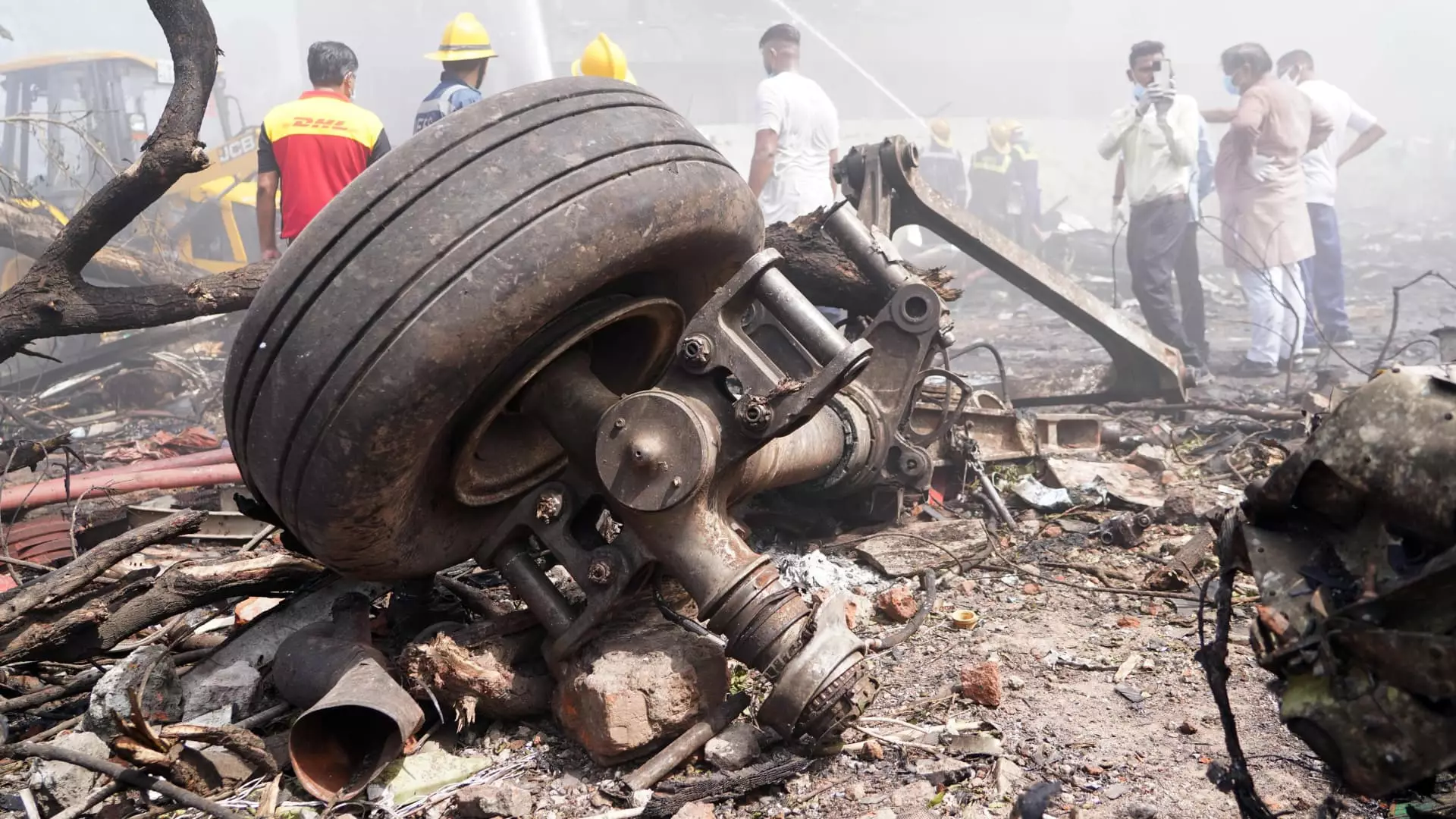On a fateful Thursday, an Air India Boeing 787-8 Dreamliner, destined for London and carrying 242 individuals, met with disaster just moments after lifting off from Ahmedabad’s Sardar Vallabhbhai Patel International Airport. This incident marks not only the inaugural crash of the Boeing 787 Dreamliner but also stands as one of the most harrowing aviation tragedies in recent memory, claiming the lives of all aboard except for one fortunate individual. As survivors grapple with their trauma and families mourn, a broader conversation must be ignited about safety protocols in an industry often heralded for its technological advancements. The questions that loom are difficult: How could a state-of-the-art aircraft succumb to such a catastrophic fate?
Understanding the Aircraft: A Symbol of Modern Engineering
The Boeing 787 Dreamliner, known for its long-range capabilities and innovative design, has been a game changer in commercial aviation since it first debuted in 2011. Even though the aircraft had been operational for just over a decade, its reputation was built upon a foundation of advanced engineering, making this tragedy all the more confounding. Air India had embraced the Dreamliner as a cornerstone of its fleet, with plans for expansion suggesting a belief in the aircraft’s reliability. Yet, this recent calamity draws attention not only to the inherent risks of flying but also to the fallibility that looms over even the most sophisticated machinery.
The plane recorded a rapid ascent to a mere 625 feet before plummeting downwards—a sheer drop that defies understanding. Preliminary findings indicate a catastrophic failure; however, the nuances of what transpired during those crucial moments remain shrouded in uncertainty. Instead of focusing solely on possible mechanical failures, it is essential that investigations delve deeper into a web of potential human errors and systemic oversights.
An Investigation Shrouded in Complexity
The investigation into this tragic accident will inevitably interrogate a multitude of factors. Preliminary inquiries will undoubtedly scrutinize maintenance records, pilot training, and environmental conditions. It is vital to underscore that air crashes do not commonly stem from singular points of failure; more frequently, they arise from a constellation of issues that converge into disaster. The participation of international air safety bodies, alongside manufacturers like Boeing, adds a critical layer of accountability. Yet, history suggests that such investigations can languish in bureaucracy, causing a painful delay in truth-seeking.
Furthermore, the suggestion that Boeing’s engineers might have skimped on manufacturing practices exposes a potentially grim narrative—one where financial pressures compromise safety. Such allegations are not trivial; they echo concerns raised in the past about the aerospace giant’s commitment to rigorous protocol. The consequences of these shortcuts could not only devastate lives but also undermine public trust in an essential industry that holds human lives in its wings.
Public Perception and the Future of Aviation Safety
What stands out in the aftermath of this tragedy is the psychological burden it places on the flying public. The aviation sector had made great strides in safety, but a deafening silence looms now—a reflection of widespread discomfort that may linger for years. The question spirals: how can passengers, and the general public at large, find solace when incidents like these shake the very foundation of air travel? As the world rallies to improve safety protocols, the prospect of flying again cannot open without clarifying accountability.
Moreover, this incident could have long-lasting ramifications on Boeing’s broader market performance. While analysts suggest short-term financial impacts may be minimal, the dissipation of consumer confidence could create an undercurrent of unrest. If tomorrow’s passengers question the safety of the very aircraft they choose to board, the ramifications could extend beyond immediate finances, challenging the reputation of an industry that thrives on precision and safety assurance.
A Call for Reckoning in Aviation Safety
In the wake of this tragedy, it is imperative that we advocate for a stronger regulatory framework that prioritizes both safety and accountability. Stakeholders must assess the practices that underpin our aviation systems and closely examine the culture within which manufacturers operate. While technological advances promise to enhance air travel, they should never become a facade that obscures the need for thorough oversight and unwavering commitment to passenger safety.
In a world still reeling from the effects of numerous global events, this tragedy serves as an urgent reminder that progress in any form must never come at the cost of human lives. A reckoning is necessary—a call to action that compels us to demand transparency, accountability, and most importantly, a commitment to ensuring safety, so that the skies can return to being a realm of wonder, not a harbinger of calamity.


Leave a Reply